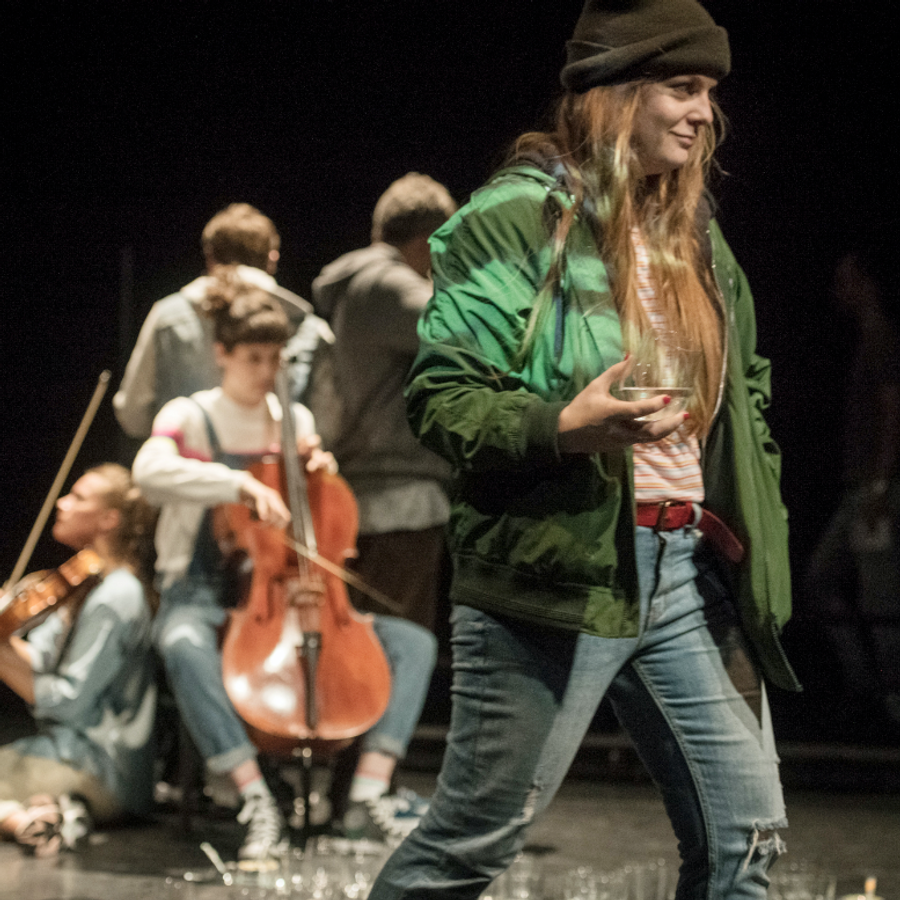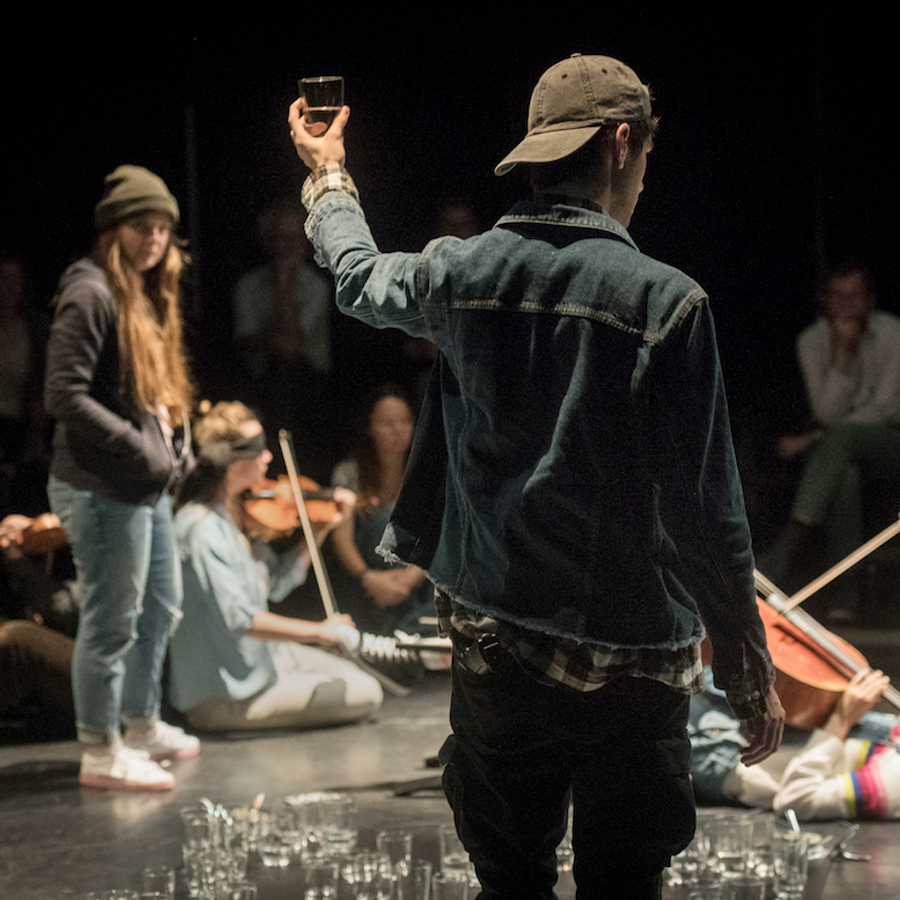CHOIRS & GROUPS
THE POWER OF THE GROUP
PEER PRESSURE.
LEADERSHIP.
BIG WORDS, FOR EVERYDAY THINGS.
Peer pressure plays a very important role in Be My Superstar.
Who takes initiative? Who follows? Who gets forced to follow? Is there anyone who dares to resist?
These facts occur subtly in various aspects of our daily lives, but also in lifechanging choices. How do you deal with this? How much power does a group or leader have?
Below you will find a few exercises to do with your class or group.
Through the exercise you can experience what it’s like to follow, to be followed, or to have no leader.
THE POWER OF THE LEADER
A group of people is capable of many things. Good things, but unfortunately terrible things as well. This may be due to an inspiring leader with bad intentions at the head of the group.
GROUP EXERCISE
- Name a ‘leader’. This can be a very famous person (a president, a football captain…), but also someone from your personal environment (school headmaster, scout leader…).
- What makes those people leaders? Are there certain capacities or competences needed?
- What kind of influence do they have on the group they are leading? Is this a positive influence? Or can this be negative as well? (try to look at this from the point of view of someone in the group as well as the point of view of an outsider)
- Are you part of a group that you feel very attached and connected to? Or a group that achieves remarkable things? Which groups are this?
- Which factors create that sense of connectedness?
In the ancient-Greek theater plays, there was already a ‘group’. They were called ‘the choir’ and did more than just sing. They were given lines to say together, or did a synchronous choreography. Their ‘role’ was to be a kind of spectator that gave comments to the events of the play. Often this was a civil reaction, or they had to pray for the help of the gods, or temper the Greek hero. The choir expressed the average voice of the people.
In Be My Superstar there is also a choir. Not a singing choir, but a ‘speaking choir’. It’s not necessarily just actors or musicians that take part of this speaking choir, also the audience takes part in it. The members of the choir don’t say/yell the same lines at the same time. There isn’t an actual conductor or leader, but still the speaking choir functions as a ‘choir’, with a clear voice.
GROUP EXERCISE
- Scatter yourself with your group around the classroom. Point out a leader for your group. When everybody is ready and standing still, you can start walking around the classroom. When the leader starts moving, the rest of the group has to start following. If the leader stops, everyone stops.
- In the second version, (now point out a different leader), the same thing happens. Only the leader varies in tempo (sometimes fast, sometimes very slow, sometimes he/she accelerates…). Everybody ends in standstill when the leader stops moving.
- Repeat this (again with a different leader), but now let 1/3 of the group watch from the sideline. They don’t know who the leader is, and are not allowed to find out. Make sure with your group that your leader doesn’t stand out by following his or her movements very closely. Speed up when the leader speeds up, slow down when the leader slows down…
A GROUP WITHOUT LEADER
Up until now everyone was following a leader. This is pretty easy, because you are relying on one person to determine what to do, and follow him / her without thinking. In this case, this is completely harmless. But try to think of a situation in which this is not harmless and things can end badly for the people in the group or for the people outside the group. Do you resist? How?
GROUP EXERCISE
- Repeat the exercise you were doing before, but without indicating a leader. Don't discuss who you are going to follow! Scatter among the classroom. When everyone is standing still, try to start walking all at the same time. Try not to give subtle signals (like stamping your feet, nodding, couching,...) to eachother.
- If you can manage to start walking together, try stopping together as well. Tip: you can do this best by slowing down until you are standing completely still.
Does this work for your group? Or is there one person who is always taking the initiative / the first steps? How does this make you feel when you succeed in doing this?
GROUP EXERCISE
- Your group is now ready for the ULTIMATE challenge! Make sure everyone is sitting doing quietly, close your eyes and count to ten. Not all together, but one by one. Only, you cannot discuss an order to do this. At one point someone says 'one', the other moment someone else says 'two'. Continue until you reach 'ten'. Start again when two people take the lead at the same time.
- Don't panic when this seems too hard at first, because it is very hard! You can make it a bit easier for the group by starting of with the eyes open, and only closing them when you feel you can do this.





